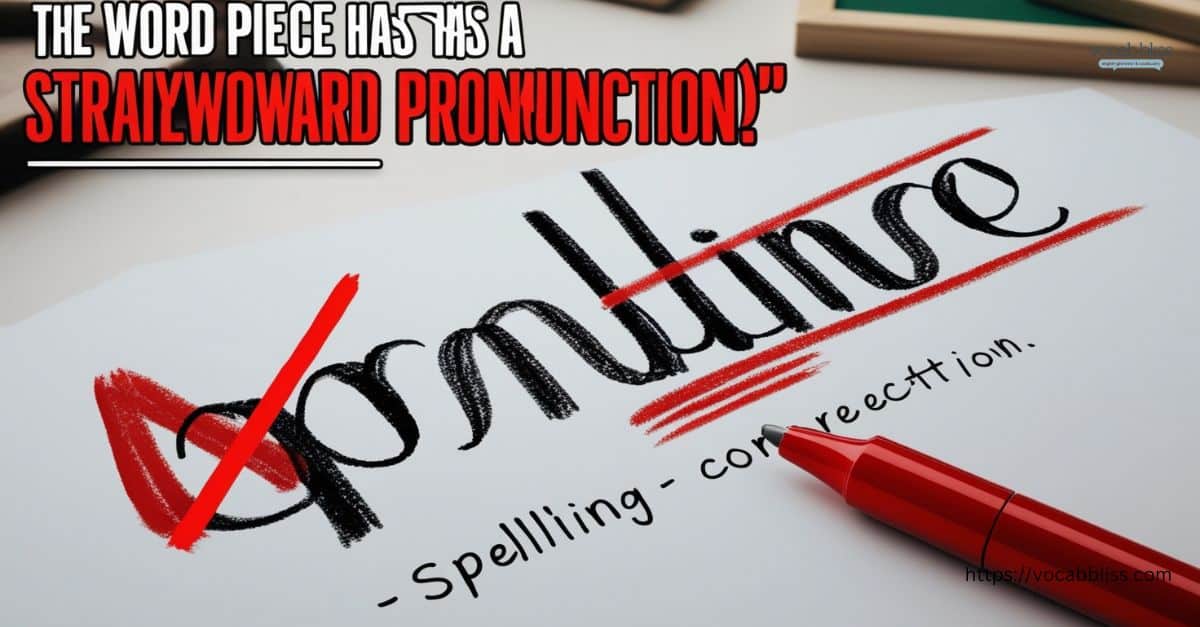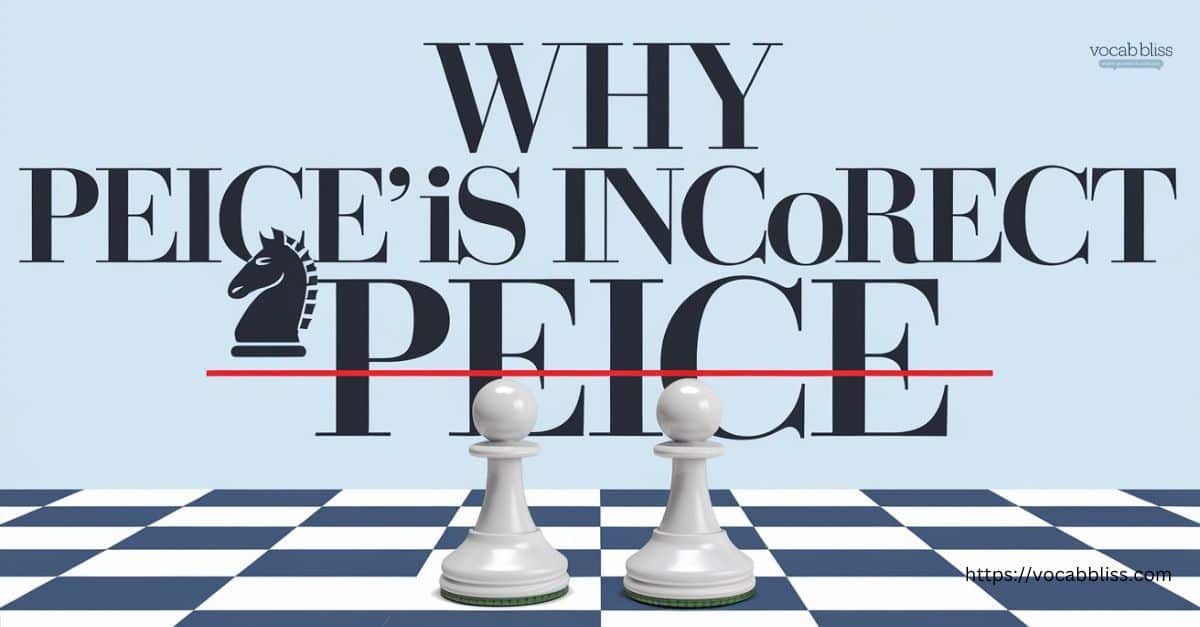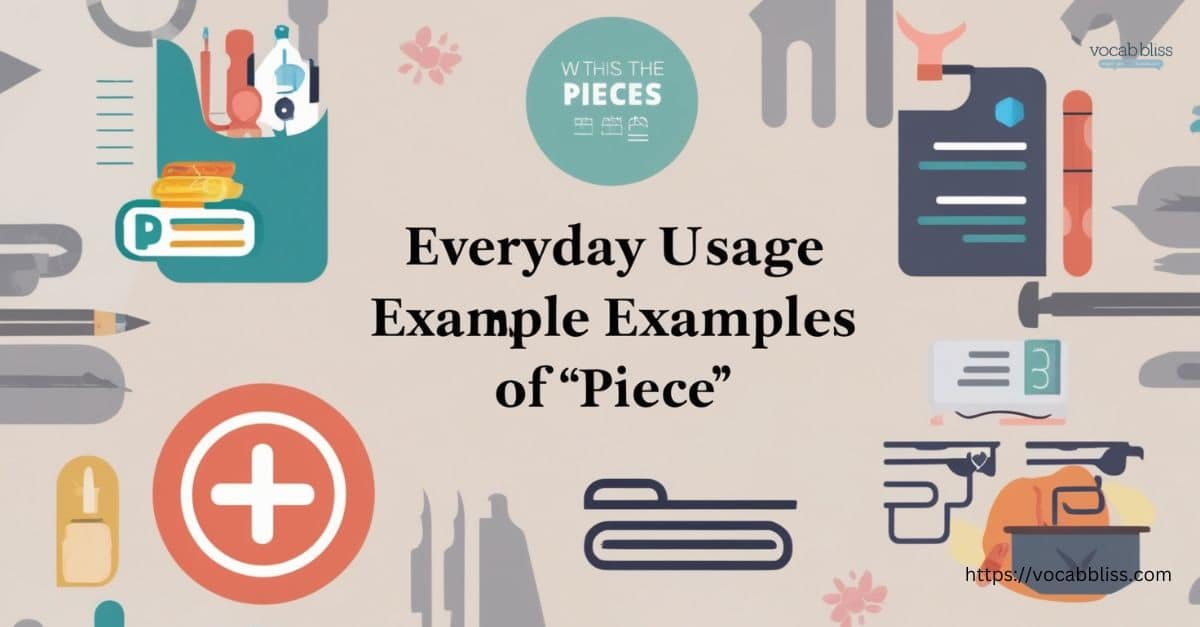Mistakes in spelling can lead to confusion, and one of the most common errors involves the words piece and peice. You may have encountered this mix-up in writing, whether in your own work or while reading something online.
Understanding the correct spelling and usage of “piece” is crucial for clear communication. This guide delves deep into the distinctions between “piece” and “peice,” ensuring you never fall into the trap of misspelling again.
Understanding the Confusion: Why Do People Mix Up “Piece” and “Peice”?
Spelling mistakes often arise from the complex rules of English. “Piece” and “peice” are prime examples of this challenge. The confusion typically stems from two factors: the phonetic structure of the words and the general tendency to follow common spelling rules, such as “I before E, except after C.”
The Phonetic Structure
The word piece has a straightforward pronunciation /piːs/. However, when people hear the sound, they might mistakenly apply the “I before E” rule, leading them to write “peice.”

Common Spelling Rules
- “I before E” Rule: Many people mistakenly apply the rule to “piece,” thinking that because it contains “i” and “e,” it should follow the rule. However, piece does not fall under the exceptions of this rule.
- Autocorrect Features: The modern reliance on autocorrect can sometimes reinforce misspellings. If your device has learned that “peice” is your common input, it may continue suggesting this incorrect spelling.
Understanding these factors can help clarify the confusion and improve your spelling accuracy.
“Piece” – Definition, Meaning, and Usage
Definition
The term piece serves multiple purposes in the English language:
- Noun: Refers to a portion, part, or slice of something.
- Verb: Used in expressions like “to piece together,” meaning to assemble or combine parts.

Origins and Etymology
The word “piece” originates from the Latin word “pax,” meaning “peace.” Over time, it evolved through Old French into the modern English term we know today. This etymology emphasizes the concept of something being whole or complete.
Usage in Sentences
To illustrate the various uses of “piece,” here are some examples:
- As a Portion: “I would like a piece of cake.”
- In Reference to Parts: “She gave me a piece of advice.”
- As a Work of Art: “This sculpture is a remarkable piece.”
Common Phrases with “Piece”
“Piece” is often found in popular idioms and phrases:
- Piece of cake: Meaning something is easy to accomplish.
- Give someone a piece of your mind: To express your opinion or frustration.
- A piece of the action: To participate or share in something, especially a profitable venture.
Understanding these phrases will help you use “piece” accurately in everyday conversations.
Read More Tying or Tieing? Use the Correct Form
Why “Peice” is Incorrect
Common Missteps
The misspelling peice is a frequent error due to its phonetic appeal and reliance on the “I before E” rule. Here’s a closer look at why “peice” doesn’t hold up:
- Phonetic Confusion: Many people pronounce it incorrectly, leading to the assumption that “peice” is a valid form.
- Association with Similar Words: Other words like “niece” and “piece” may mislead writers into making the same mistake.

Read More Tomorrow or Tommorrow: Which One Is Correct?
Spelling Rule Application
Despite the intuitive appeal of “peice,” it fails to adhere to basic English spelling conventions. Here’s why:
- “Piece” Does Not Follow the “I before E” Rule: The “I before E” rule applies to specific words and does not universally apply to all instances of “i” and “e.”
- Common Noun vs. Proper Noun: Unlike names or titles that may bend traditional rules, “piece” is a standard noun with established spelling.
Memory Aids
To avoid confusion, here are some tips:
- Think of ‘Pie’ before ‘Ce’: Visualize a pie to remember the correct sequence of letters in “piece.”
- Associative Learning: Connect the word “piece” with things you enjoy (like “piece of cake”) to reinforce its correct spelling.
Side-by-Side Comparison: “Piece” vs. “Peice”
To solidify your understanding, here’s a visual comparison of “piece” and “peice”:
| Feature | Piece | Peice |
|---|---|---|
| Spelling | Piece | Peice (incorrect) |
| Definition | A portion or part of something | Not a recognized English word |
| Pronunciation | /piːs/ | Not applicable |
| Example | “I have a piece of pie.” | “I have a peice of pie.” (incorrect) |
This table emphasizes the clear differences and helps you remember the correct form.
Everyday Usage Examples of “Piece”
To reinforce your understanding of “piece,” consider its applications in various contexts. Here are examples across different writing styles:

Formal Writing
- Academic: “In the study, the researcher examined a piece of evidence that significantly altered the results.”
- Professional: “The report included a piece detailing the financial breakdown of the project.”
Informal Writing
- Casual Conversations: “Can I have a piece of that pizza?”
- Social Media: “Just finished a piece of artwork that I’m proud of!”
Dialogue Examples
Imagine a conversation:
- Person A: “Did you try that new cake? I want a piece!”
- Person B: “Yes! It was a delicious piece of heaven.”
Common Mistakes
Unfortunately, “peice” can pop up in everyday situations, leading to confusion:
- Incorrect: “Can I have a peice of your sandwich?”
- Correct: “Can I have a piece of your sandwich?”
By recognizing these examples, you can better understand how to use “piece” effectively.
Frequently Asked Questions (FAQ) About “Piece” and “Peice”
Why do people commonly misspell it as “peice”?
Many misspell “piece” as “peice” due to phonetic confusion and the assumption that it follows the “I before E” rule, which does not apply in this case.
Is there a mnemonic to remember the correct spelling of “piece”?
Absolutely! A helpful mnemonic is to visualize a pie (which is spelled p-i-e) before the ce to remember the correct order of letters in “piece.”
Can “peice” ever be considered an acceptable alternative spelling?
No, “peice” is not recognized as an acceptable spelling in English. It remains a common typo, and using the correct spelling enhances your writing clarity.
What are other common spelling errors similar to “piece/peice”?
Here are a few similar common mistakes:
- Their, there, they’re
- Your, you’re
- Effect, affect
These words often confuse people in writing, just as “piece” and “peice” do.
Conclusion
In summary, understanding the distinction between piece and peice is essential for effective communication. By recognizing the importance of correct spelling, you can enhance your writing and avoid confusion. Remember the tips and mnemonics provided in this guide to ensure clarity in your work.
Whether you’re sharing a piece of cake or discussing a chess piece, using the correct spelling will strengthen your message and leave a lasting impression. If you have any other spelling queries or would like to share your experiences, feel free to leave a comment!

Jorge Phillips is an experienced blogger who writes for Vocab Bliss, sharing his passion for the English language. With a knack for simplifying complex grammar rules and a focus on commonly confused words, Jorge helps readers navigate the nuances of English with ease. His insights aim to make learning engaging and practical.







